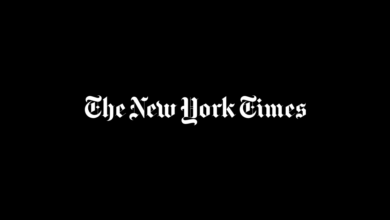Trump Policies Draw Outrage at May Day Protests Across the U.S.

Annual May Day rallies in cities across the country swelled with thousands of anti-Trump demonstrators on Thursday, as outcry continued to grow over the president’s agenda and expansion of executive power.
Protesters denounced the administration’s effort to roll back workers’ rights — a particular sore spot on a day dedicated to celebrating organized labor — as well as plans to cut education funding and carry out mass deportations.
“We’re here to support our workers and our union,” said Jena Olsen, 63, who has been a flight attendant for 39 years, at a large rally in Chicago’s Union Park. But demonstrators said they were also angry about the “threat to democracy” posed by President Trump.
“I think the two coexist,” Ms. Olsen said, “and this huge turnout shows that.”
A separate effort, which organizers billed as a National Law Day of Action, brought legal professionals to the Supreme Court in Washington and federal courthouses across the country on Thursday to push for judicial independence and oppose efforts to intimidate law firms.
The lawyers demonstrating at the Supreme Court reaffirmed their oaths to serve with integrity and to protect the rule of law — principles that do not appear to interest Mr. Trump, said Fabiola Gretzinger, 28. “He thinks he’s above it,” she said.
Police closed streets for the crowds in major cities including New York, Los Angeles, Philadelphia and Washington. But protesters also rallied in small communities that voted overwhelmingly for President Trump, including places like Norman, Okla., Sauk City, Wis., and Hendersonville, N.C. Groups held signs in front of municipal buildings and public schools, and some demonstrators wore red to indicate support for public education.
A rally in downtown Los Angeles began early on Thursday and focused largely on migrant rights. Jose Servín, 31, an organizer for a statewide coalition of advocacy groups who helped set up for the rally, held a sign that read, “Come for one of us, come for all of us.”
Mr. Servin immigrated to the United States as a child, he said. “I found a place here where I can succeed, where I can thrive, where I can plant roots — I’m a father now — and I’m going to fight like hell to protect that,” he said.
The protests — more than 1,000 were expected across the country — were spearheaded to coincide with traditional May Day labor rallies by 50501, a loose coalition of grass-roots activist groups, as well as by labor, nonprofit and civil rights organizations. May Day commemorates the struggle for an eight-hour workday, won by labor organizers in 1886 only after clashes in Chicago resulted in the deadly Haymarket Riot.
Labor groups made up a significant portion of demonstrators at the rally in Chicago on Thursday, though pro-Palestinian activists and anti-Trump demonstrators swelled their ranks, and many saw their concerns as overlapping.
“He’s tearing apart our Constitution,” said Bill Hincks, 40, a union official from the Chicago suburb of Oak Forest, who faulted Mr. Trump for firing officials at agencies that regulate workplace safety, including at the National Labor Relations Board.
The Trump administration has sought to quell dissent in corporate America, universities, government agencies and the news media. But in recent weeks, demonstrations opposing the president’s agenda, as well as resistance from some of the institutions targeted by Mr. Trump, have increased in size and frequency.
Gov. JB Pritzker of Illinois, a Democrat who first ran for office in 2018 because of his revulsion to Mr. Trump’s first term, called for an even larger outcry during a speech on Sunday in New Hampshire.
“It’s time to fight everywhere, and all at once,” he said.
Katie Benner contributed from Washington.




